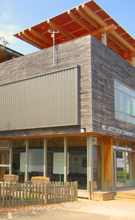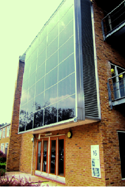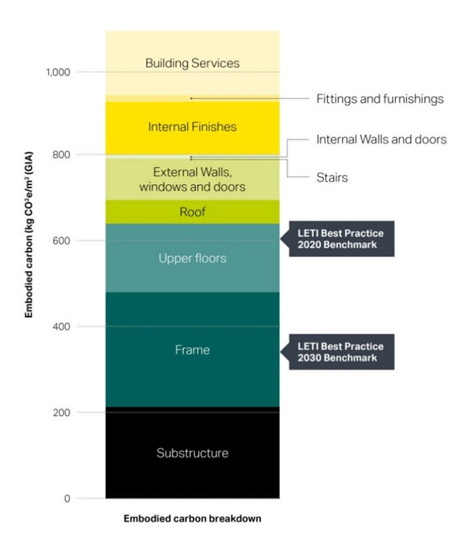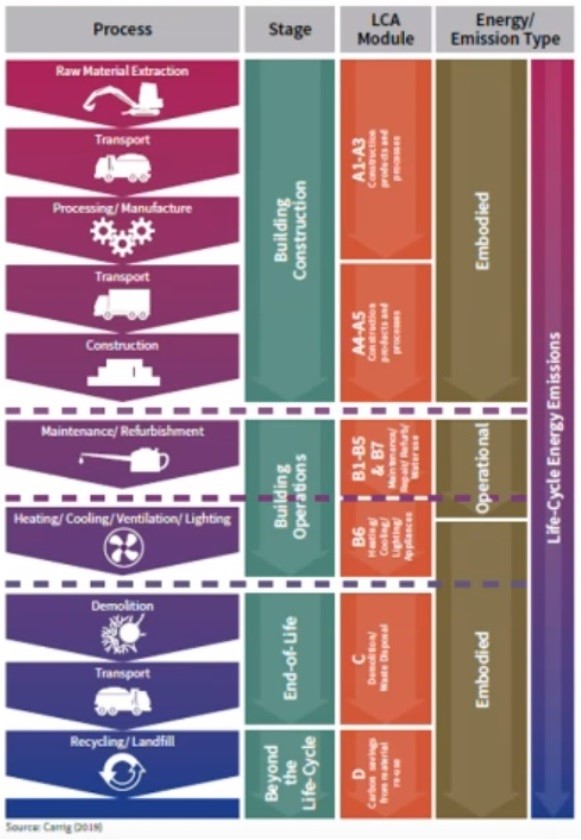|

Hybrid design solutions

BIPV double fašades
|
 |
Prospects for refurbishing buildings October 20
|
|
|
|
| The case for refurbished buildings |
|
Roughly 70% of the building stock expected in 2050 is already been built, considering current construction, demolition, and renovation rates across Europe. The European commission roadmap concludes that in the upcoming decade a €200b increase in energy saving measures is necessary in order to meet the 2050 carbon targets. This increase will contribute in alleviating the EU's imported energy needs. In addition, such an investment will improve living and working conditions and increase property value.
As far as the procedure is concerned, refurbishment projects are progressed through a series of stages, namely pre-design, concept design, final design and execution.
Not all design features are applicable or should be considered in any one of those stages. Some may come into play later within the process than others.Early planning can create a business case for retaining buildings, meaning both keep each city's architectural heritage intact but also pave the way towards each government's Net Zero Carbon commitments for 2050.
The latter may be pursued further with a better chance after considering the following facts:
- The built environment consumes today around 40% of the world's extracted materials.
- Demolition and construction waste represent one of the largest waste streams.
- Buildings are responsible for 39% of all carbon emissions in the world.
- 28% relates to operation emissions (ventilating, space-heating & cooling, lighting, domestic hot water etc)
- 11% relates to embodied carbon emissions and upfront carbon associated with construction processes and materials through the whole of a building's life.
- New builds generate large initial carbon footprints due to the extraction of raw materials, transport and construction as shown on the break down below:
- 0.6% internal walls and doors
- 1.2% Fittings and furnishings
- 5.0% roof
- 8.8% external walls, window, doors
- 12.4% internal finishes
- 13.6% building services
- 14.2% upper floors
- 19.6% substructure
- 24.5% frame
- A deep refurb can have operational costs close by to those of a new-built
- 60% of embodied carbon in buildings is associated with the sub structure, frame, upper floors and roof
The London Energy Transformation Initiative (LETI) has concluded that in order to achieve this target each new building will need to have an embodied carbon figure not exceeding 600 kgCO2e/m2 (bearing in mind a typical commercial building's embodied carbon is 1000-1500).
In the case of a new building, the structural frame and basement quantities in concrete, steel and aluminum account for a third of their embodied carbon as presented in the following figure (carbon breakdown in a typical office building).

There are no penalties in fabric energy performance for deep refurbs which retain their substructure and superstructure based also on the Enerphit standard.
The city of London has proceeded with a new London Plan draft last reviewed in July 2019. This prioritizes first retention and then refurbishment as presented in the following figure illustrating the circular economy principals regarding buildings.

The next London statutory spatial development strategy requires:
- A circular economy statement. This will demonstrate how products and materials are re-used or recovered for all referable projects.
- A life carbon assessment regarding embodied and operational carbon emissions.

In the meantime, the royal institute of British architects (RIBA) has raised the fact that there is now a need to offer an incentive to cut tax to 5% similar as has been the case for new builds for a long time.
Businesswise the main advantage of a refurb over a new built is that it usually can be ready much sooner which also means lower risk in its project programming. A new built could take often five years or more from inception to hitting the market by which time work place practices and technology will have moved on.
In Greece based on 2011 figures (from the Hellenic Statistical Authority) still relevant today with the building sector dead during the Greek crisis, the number of buildings in total is estimated to exceed 4 million. The number of buildings built prior to the thermal insulation law back in 1980 is 60% (based on the Hellenic Statistical Authority's report regarding their survey on energy consumption from 2012) with homes comprising approximately 79% and commercial buildings the rest. Residential properties based on current data with energy performance between 'H-E' (Greek rating) comprise 67%. Despite the fact that Greek households consume little energy compared to the rest of the EU, when incorporating the dry and warm climate in the equation, Greece drops from 6th to the 17th place.
With nothing much having been built or deeply refurbished the past two decades (roughly an additional 15-20%) Greece's building stock is fair to admit in a pretty poor shape.
This obviously offers great opportunity for energy and carbon savings through refurbishing the old building stock. Thus today Athens more than ever needs to kick into gear aspiring its mayor to absorb in full the European funding from programs like Life's Environment and Climate action subprograms towards achieving its 2050 environmental goals.
In August 2020 new grants have been announced by the Greek minister for the environment through the Eksikonomo-Autonomo program. This offers €850m for upgrading the energy performance of residential buildings (further support will follow via the recovery fund) with an additional 600M to be offered to companies for reducing their energy consumption.
In more detail, the grants will cover between 50-65% of each investment depending on income (incomes up to €30k) covering also higher incomes to some extent. An additional 10% is offered for years 2020-21 due to the coronavirus and another 10% to homes that upgrade their energy performance from a grade 'Z'-'H'to 'B'. Total financial support is now doubled meaning projects supported may be as high as €50k.
Included within the new energy saving scheme are Photovoltaics on roofs, lighting and climate controls, energy storing and energy points for electric cars after energy saving measures have been considered and assist a building in achieving an energy performance rating of B+ or better. | |
 |
|
|
| |
|
|
|
|
|
|

Is nuclear viable? |
